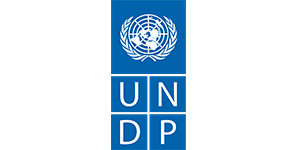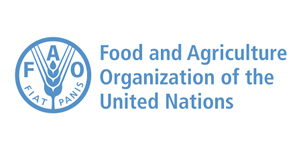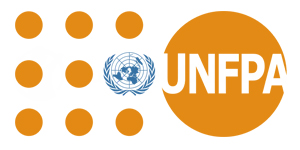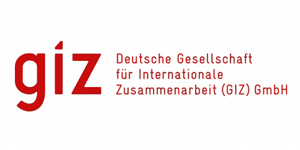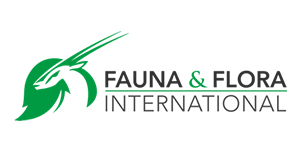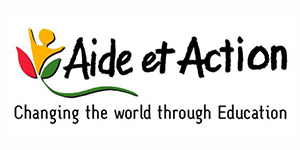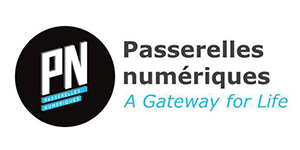Fauna & Flora International (FFI) – Vietnam Programme is seeking three
senior technician for biodiversity survey in Dong Chau-Khe Nuoc Trong NR (DCKNT NR).
TERMS OF REFERENCE
Three senior technicians to conduct biodiversity baseline survey in Dong Chau Ke Nuoc Trong Nature Reserve
- BACKGROUND
The “USAID Biodiversity Conservation” activity is a 5 year-project starting from July 2020 to June 2025. The project aims to maintain and increase forest quality and protect and stabilize wildlife population in high conservation value provinces (Ha Tinh, Quang Binh, Quang Tri, Thua Thien Hue (TT Hue), Quang Nam, and Lam Dong). The project targets 13 special use forests (SUFs) and seven protection forests (PFs), linking forest management units across the landscape to maintain forest cover and connectivity of habitats vital for the protection of Vietnam’s threatened and endemic species. The project lead in Vietnam is WWF-Vietnam, and FFI has a sub-contract from WWF-US, to work alongside WWF-Vietnam, but under their management framework. FFI will take the lead and/or provide oversight (as per the contract) on all the project’s Strategic Areas (SA) in Quang Binh Province, which are (1) Promote Conservation-Friendly Enterprises in Forest Dependent Communities; (2) Strengthen management of national parks and protected areas; (3) Increase functionality of law enforcement systems for forest and wildlife crimes; and (4) Reduce local demand on wildlife products.
Strategic Approach 2 aims to strengthen management of special use and protection forests in project’s sites. A metric for measuring the impact of improved Protected Area (PA) management and the ultimate project success is adequate and standardized systematic monitoring of wildlife and forest condition. To achieve this, standardized baseline camera trap surveys of terrestrial birds and mammals in target PAs will be undertaken. Surveys will also contribute to our basic understanding of the status of terrestrial vertebrate species, both in the park and nationally.
In addition to the biodiversity monitoring, threats to terrestrial birds and mammals will be monitored, using snares and other trap types as the main indicator. Snaring is thought to be prevalent across the Annamites, including Dong Chau Khe Nuoc Trong Nature Reserve (DCKNTNR), although no systematic information has been collected for DCKNTNR to date.
II. OBJECTIVE
The specific objectives for the camera-trapping component of this work are:
- To build a species list of terrestrial mammals and birds present in DCKNTNR
- To create a heatmap of biodiversity value in DCKNTNR, using terrestrial vertebrates as the indicator group (species richness)
- To uncover the factors which are affecting the distribution of terrestrial vertebrates in DCKNTNR, including the importance of threat drivers, such as hunting
- To map the distribution of a subset of ‘high priority’ species (based on IUCN Red List
status)
The specific objectives for the snare survey component of this work are:
- To estimate snare occupancy (i.e. the probability of snare presence in a sample site) and detectability (i.e. the probability that patrol teams detect a snare in a sample site) across DCKNTNR
- To create a heatmap of snare prevalence in DCKNTNR
- To provide ad-hoc snare presence data, collected during the course of fieldwork
III.EXPECTED OUTPUTS:
- Minimum of 36 camera trap stations set up across the whole of DCKNTNR and snares removed across an equal number of survey plots
- In-field training delivered to partners, including rangers, on camera trapping and SMART methods
- Data on mammal and bird distribution across DCKNTNR
- Data on snare prevalence and distribution from surveys carried out during setting and/or picking up the camera traps, as well as ad-hoc surveys along routes taken during course of fieldwork
- Ad-hoc biodiversity surveys of mammals, birds, reptiles, amphibians,
Note: these outputs will be delivered by FFI staff and the consultant technicians jointly, and the consultants are not solely responsible for the tasks.
IV. MAIN TASKS OF THE CONSULTANCY:
- Work as a team leader to set up and retrieve camera traps in DCKNTNR as designed, ensuring that the camera traps are installed correctly each with the assistance of one junior technician
- Work with FFI’s assigned staff to develop logistical details of plan for field work
- Participate in a training on SMART and guidance on camera trap protocols
- Set up at least 12-14 camera trap stations per consultant (each consisting of two camera traps)
- Retrieve all of the camera trap stations after two months
- Collect data on snare/trap prevalence and distribution from surveys carried out during setting and/or retrieving the camera traps, as well as ad-hoc surveys along routes taken during course of fieldwork
- Submit all data to FFI, including data on mammal and bird distribution across DCKNTNR and data on snare prevalence and distribution
V. DELIVERABLES
The consultants are expected to deliver the following outputs:
- Data of camera-trapping setting up and retrieving, following the FFI
- Accurate data on snare/trap occurrence, in the survey plots and along all travel routes, also following the FFI template
- Ad-hoc data on other species encountered during fieldwork, including notes and GPS coordinates
- High quality video clips and pictures related to the field
VI. SCOPE AND TIMEFRAME
The field work will take place in the designed camera trapping stations located in DCKNTNR, Quang Binh Province (See map, below). The estimated time commitment is around 28 days per consultant (set-up: 14 days, retrieval: 14 days), excluding travel days from home to the DCKNTNR. The exact number of days will be discussed and decided before signing contract.
|
|
# Days |
Timing |
| 1 |
The 14-day field survey to set up camera trapstations |
14 days |
June, 2022 |
| 2 |
The 14-day field survey to retrieve cameratrap stations |
14 days |
August 2022 |
Remarks: FFI will hire local guides and porters to support the consultants during field surveys.
VII. QUALIFICATIONS AND EXPERIENCE
- University degree in one of the following fields: conservation biology, natural conservation, forestry or related fields;
- At least 3 years of experience in conducting biodiversity surveys, including conducting a minimum of 2-3 camera trap survey campaigns;
- Able to communicate confidently in English (speaking and writing)
- Experienced in leading survey teams in the field
- Familiar to Dong Chau Khe Nuoc Trong Nature Reserve (advantage);
- Strong commitment and responsibility working for this
- High attention-to-detail and demonstrated ability to collect accurate, well-organised and clear field data
VIII. ADMINISTRATIVE SUPPORT
FFI will provide the consultant with the following support:
- Administrative procedures to work in the field and FFI’s local partners;
- FFI will cover all costs relating to the field trip based on actual expenditures and not exceeding FFI’s cost
Note: Field work cost is receipt-based, not lump-sum. In other words, it depends on the actual expenditures and will not exceed FFI’s cost norm.
Interested candidates are invited to send CV, letter of interest and quotation in English and Vietnamese to Ms. Le Hong Viet via email
viet.hong.le@fauna-flora.org no later than
19th May 2022. Only shortlisted candidates will be contacted for interviewing.
Please note: In the letter of interest, please provide a statement addressing the commitment to this work and strictly following the methodology designed by FFI experts, provide quotation of daily rates.
For more information about FFI, please visit
http://www.fauna-flora.org
ANNEX:
SURVEY METHOD
Camera-trapping methods (in brief):
- A systematic grid of points, separated by 2.5 km, will be used (Figure 1).
- Inaccessible camera trap points will be removed from the survey design (i.e. highly rocky areas or areas that are unlikely to be accessible)
- Paired camera traps will be deployed as close as possible to each planned point (within 500 m radius), with the final location determined in order to maximize probability of detecting species; a minimum of 2 km distance between camera stations will be maintained
- Setting-up the two camera-traps per station within a 20 x 20 m plot
- Camera traps will be left in place for approximately 2 months (or longer)
- Data will be managed using a combination of a logical folder structure (camera station →
camera → images) and metadata tags applied in digiKam
- Analysis will be done in R, using a combination of R packages camtrapR, unmarked and
runjags (Note: the consultants will not be responsible for delivering the analysis)
All snares and other traps that are encountered during the course of fieldwork will be recorded in SMART Mobile. In addition to this ‘patrol-based’ data collection, snares and other traps will also be surveyed in systematic plots, with the following methods:
- Snare/trap surveys will be carried out in circular plots with a 200 m radius surrounding each camera trap station
- Survey teams (3 people) will intensively search these plots for 60-90 mins, removing all snares/traps that they find
- The exact start time of the survey, and exact time that each snare/trap is found, will be recorded; if snare lines are encountered, the time of finding the first snare in the line will be recorded and all snares that are within the boundary of the plot will be counted
- Plots will be ‘geofenced’ virtually, using GPS receivers (ensuring that surveyors do not go
> 200 m from the centre of the camera trap station plot)
- All snares that are found will be collected and taken out of the forest; other trap types will be dismantled
- Data will be collected and managed in SMART, using devices with SMART Mobile installed
- Analysis will be done in R, using time-to-event occupancy analysis, implemented in the R package unmarked (Note: the consultants will not be responsible for delivering the analysis)
Figure 1. Layout of camera-trap stations for camera trapping in DCKNTNR
Interested candidates are invited to send CV, letter of interest and quotation in English and Vietnamese to Ms. Le Hong Viet via email
viet.hong.le@fauna-flora.org no later than
19th May 2022. Only qualified group of consultants will be contacted.
Fauna & Flora International (FFI) saves species from extinction and habitats from destruction, while improving the livelihoods of local people. Our guiding principles are to work through local partnerships, act as a catalyst for change, make conservation relevant, and base decisions on sound science. Founded in 1903, FFI is the world’s longest established international conservation body; our conservation work, and impact, spans the globe.
For more information please visit www.fauna-flora.org Kênh kiến thức kỹ năng, phát triển bản thân, hướng nghiệp, blog nhân sự


